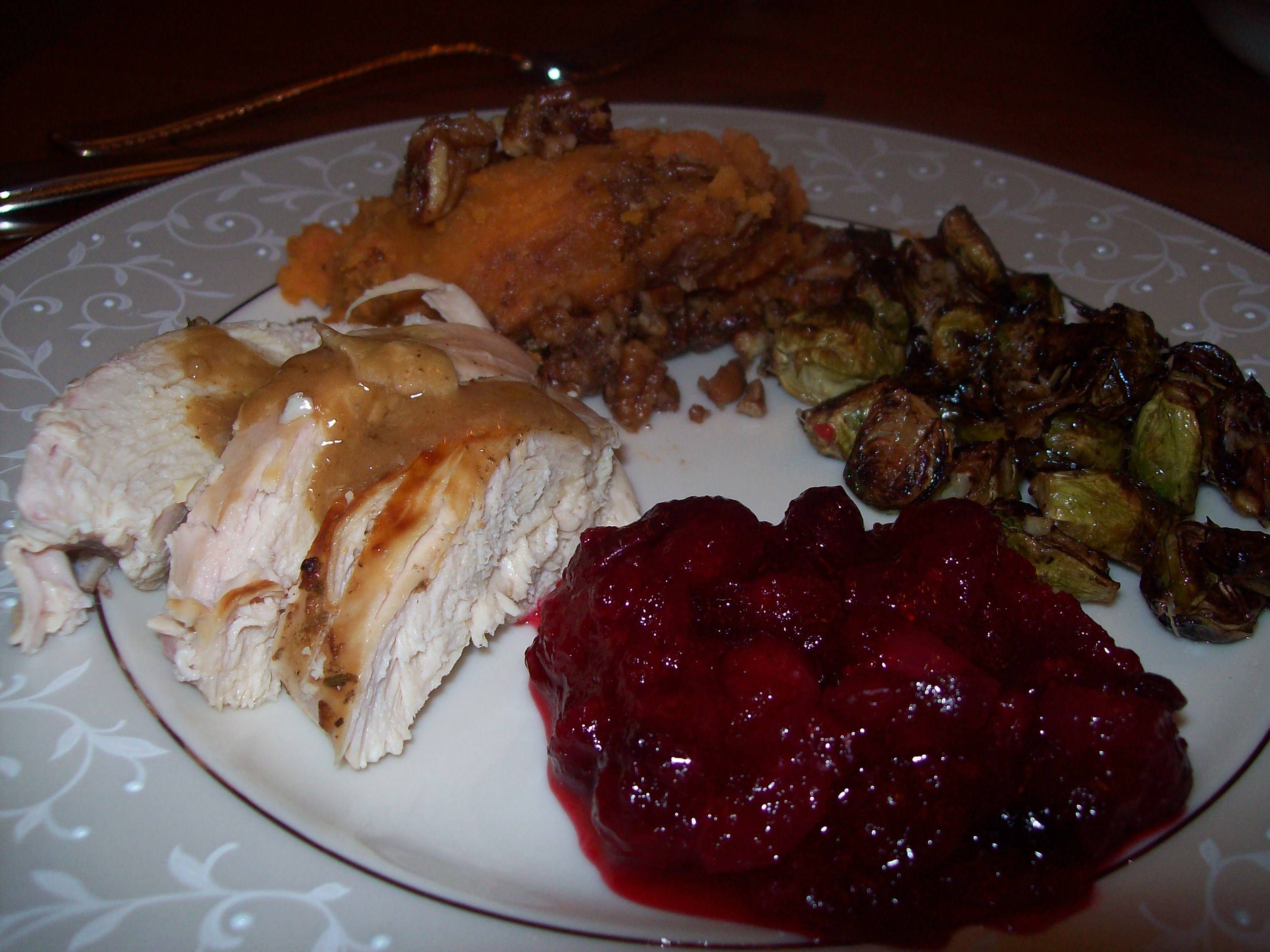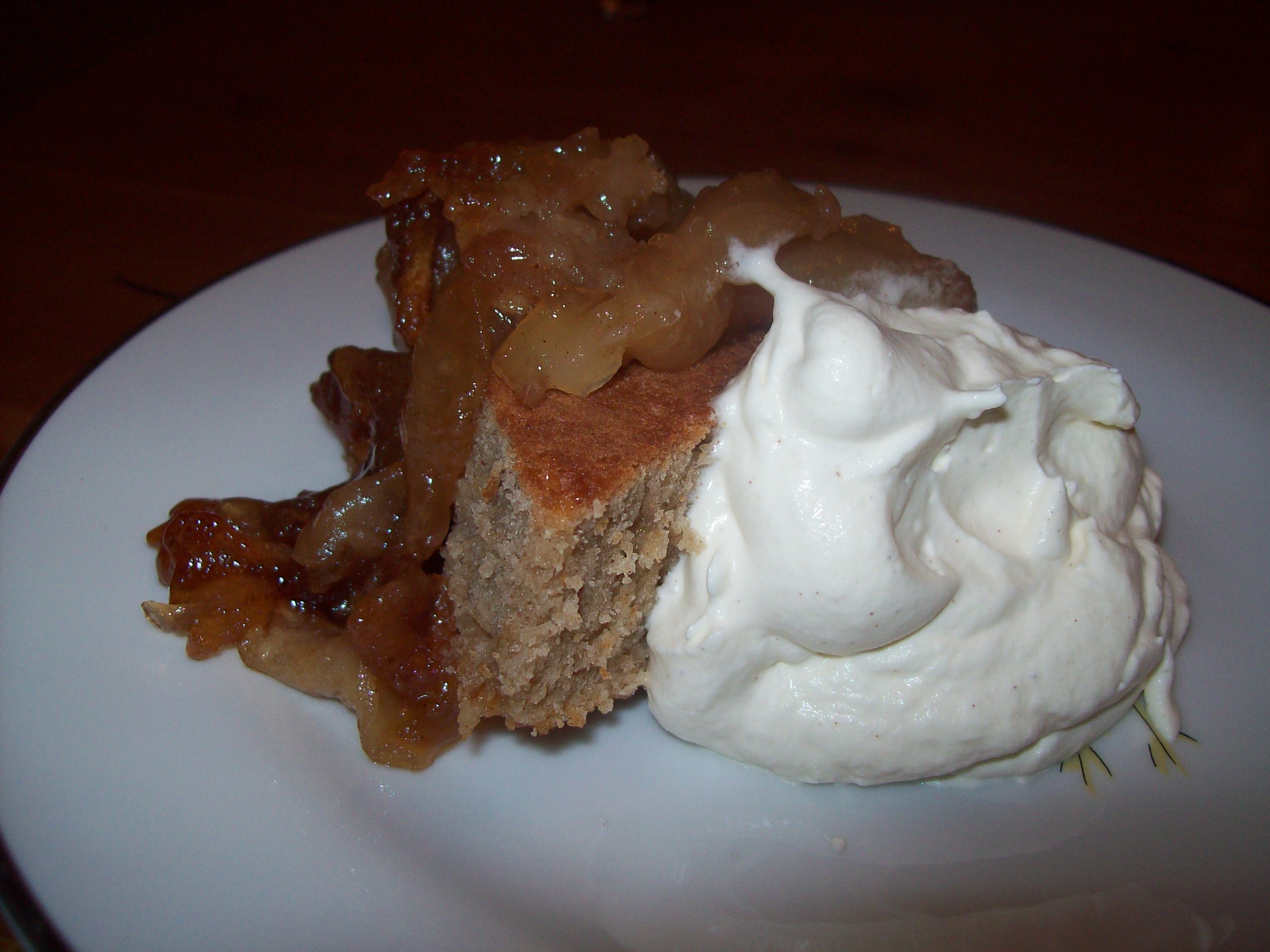A few years ago, J. and I came to the realization that at least for the foreseeable future, we were not going to be the architects of our own Thanksgiving experiences. We spend each Thanksgiving with his folks and, if they’re available, his brothers and their families, as well as a few assorted members of the extended family who may come from out of town for the big day. There’s nothing wrong with this arrangement, of course, and we always have a very nice holiday. But J. and I are foodies, and J.’s family…not so much.
Please don’t misunderstand me; I am humbly grateful, always, for meals that are cooked for me by another human being. One of the things I believe most in, as I think about raising my children to appreciate and think about food, is teaching them to eat and show gratitude for whatever is placed before them. If anyone in this world is generous to share what they have with you — whether it’s an eight-course meal or Kraft Dinner — then you ought to be properly appreciative, and truly, I am. It’s not about having some issue with the meal that’s cooked for us; it’s just that J. and I would do some things DIFFERENTLY, were we running the kitchen on Thanksgiving Day.
Once we came to that realization — and the corresponding realization that, since attempts to contribute in any way to the meal seem ill-fated, there wasn’t a viable way to liven up the table — we decided that the best thing to do, really, was to make our own special Thanksgiving dishes some other time. So for a few years now, we’ve had what I refer to as “mini-Thanksgiving,” or “practice Thanksgiving,” just about a week or two before the main event. I don’t do a turkey, but I usually roast some chickens or something, and J. helps me choose a few Thanksgiving-ish side dishes that we know we won’t be getting at the family celebration, but we’d probably think about serving in our utopian culinary Thanksgiving world. Now that the boys are getting old enough to catch on to this little tradition of ours, they’re starting to like it as well and want to be part of helping to prepare for the meal. We marked the “mini-Thanksgiving” occasion this past Sunday, and the kids and I had a very nice afternoon in the kitchen together; by the time we sat down to eat that evening, everyone had plenty to contribute to the discussion about “things we’re thankful for right now.”
Our menu this year, chosen mainly by J. and L.:
Herb-roasted chickens with thyme, sage, tarragon, and lemon
Sweet potato casserole with roasted bananas and caramelized pecans
Whole-berry cranberry sauce
Roasted brussels sprouts with balsamic vinegar and Parmesan
Caramel apple skillet cake
The food was good, for sure; but the best part of mini-Thanksgiving, I think, is that it forces me to stop and take a good look around me at least one extra time during the rush of activity that tends to define this time of year. It’s an excuse to be EXTRA-thankful, and since it’s just me, J., and the kids in our own cozy little house, it’s easier somehow to get in touch with all those feelings of what’s really important and what I really value. In many ways, Sunday’s little feast felt like not only the preamble to the holiday season, but maybe one of the most important moments we’ll have between now and the New Year. If you’ve got a stressful holiday season coming up, or if you know that the usual celebrations may leave you somehow flat, I recommend trying something like your own mini-holiday to shake things up. You may just find that doing your own thing, in a way that won’t disturb anyone else’s holiday plans, is exactly what you need to put a smile back on your face in time for the pumpkin pie.
Sweet Potato Casserole
Adapted from a recipe by Tyler Florence
I’ve made my sweet potato casserole using this recipe for years, but each time I make it, I think I scale back somewhat on the added sugars — one of the byproducts of eating cleaner food is a more sensitive palate, I guess. Anyway, the way I make it now, I still think it’s PLENTY sweet, and judging from the clean plates at the dinner table, I’m guessing the family would agree.
5 medium sweet potatoes
2 large bananas
2 tablespoons pure maple syrup
10 tablespoons unsalted butter, divided
1/3 cup milk
Salt and pepper
1 cup pecans, coarsely chopped
1/3 cup brown sugar
1 tsp. cinnamon
Preheat the oven to 400 degrees. Prick the sweet potatoes all over and roast them for 45 minutes to 1 hour, until very soft. In the last 15 minutes of cooking, add the bananas, in their peels, to the cooking tray and allow them to roast alongside the sweet potatoes. Remove the sweet potatoes and bananas from the oven; allow them to cool slightly, then remove the flesh from the skins. In a large bowl, using an electric mixer on medium speed, beat together the roasted sweet potatoes, roasted bananas, maple syrup, 6 tablespoons of butter, milk, and salt and pepper to taste. The mixture should be smooth and fluffy.
Spoon the sweet potato mixture into a large ovenproof casserole dish. In a small bowl, rub together the chopped pecans, brown sugar, butter, and cinnamon. Sprinkle the pecan mixture over the top of the sweet potatoes. Bake at 400 degrees for about 30 minutes, until golden and bubbly.
Roasted Brussels Sprouts with Balsamic Vinegar and Parmesan
6 cups halved or quartered brussels sprouts
6 tablespoons olive oil
3 tablespoons balsamic vinegar
2 tsp. salt
1 tsp. black pepper
1/2 cup grated Parmesan cheese
Preheat the oven to 400 degrees. In a large roasting pan or sheet tray, toss the brussels sprouts with the olive oil, balsamic vinegar, salt, and pepper. Roast at 400 degrees for about 20 minutes or until browned, crispy, and tender throughout, stirring halfway through. Remove the brussels sprouts from the oven and toss with the Parmesan cheese. Serve immediately.
Caramel Apple Skillet Cake
Cake batter:
1 1/2 cups all-purpose flour
1/3 cup granulated sugar
1/3 cup brown sugar
1 1/2 tsp. baking powder
1/2 tsp. salt
1 tsp. cinnamon
1/4 tsp. nutmeg
1 tablespoon pure maple syrup
1/3 cup apple cider
4 large eggs
1/2 cup unsalted butter, melted and cooled
Caramel Apples:
6 MacIntosh or other cooking apples, peeled, cored, and sliced thinly
6 tablespoons unsalted butter
3 tablespoons pure maple syrup
3/4 cup brown sugar
1 tsp. cinnamon
1 1/2 tsp. salt
Preheat the oven to 375 degrees. Combine the dry ingredients for the cake batter in a large bowl; set aside. Beat together the maple syrup, eggs, apple cider, and melted butter. Add the wet ingredients slowly to the dry ingredients and beat just until thoroughly mixed.
In a 12-inch skillet (nonstick or cast-iron) over medium-high heat, melt together the butter, brown sugar, maple syrup, cinnamon, and salt. Don’t stir it, but swirl the pan frequently to keep the heat distributed as the caramel forms. When everything is melted and evenly combined, add the apple slices to the caramel. Toss to coat. Cook for 2-3 minutes, then pour the cake batter over the caramel apples. Cook for 5 minutes on the stove top, then put the skillet into the oven and bake the cake for 20-25 minutes at 375 degrees, until golden brown and set. Remove from the oven, allow to cool for 5 minutes, then run a knife around the edges to loosen before flipping the cake out onto a plate. Serve warm, with ice cream or cinnamon whipped cream for garnish.



I love brussels sprouts. Wish I could get my husband on board. I keep trying different brussels sprouts recipes to try to tempt him. Maybe this one will do the trick. Thanks for sharing.
So excited to try these recipes and put them into my own mini-Thanksgiving! Thanks for posting 🙂